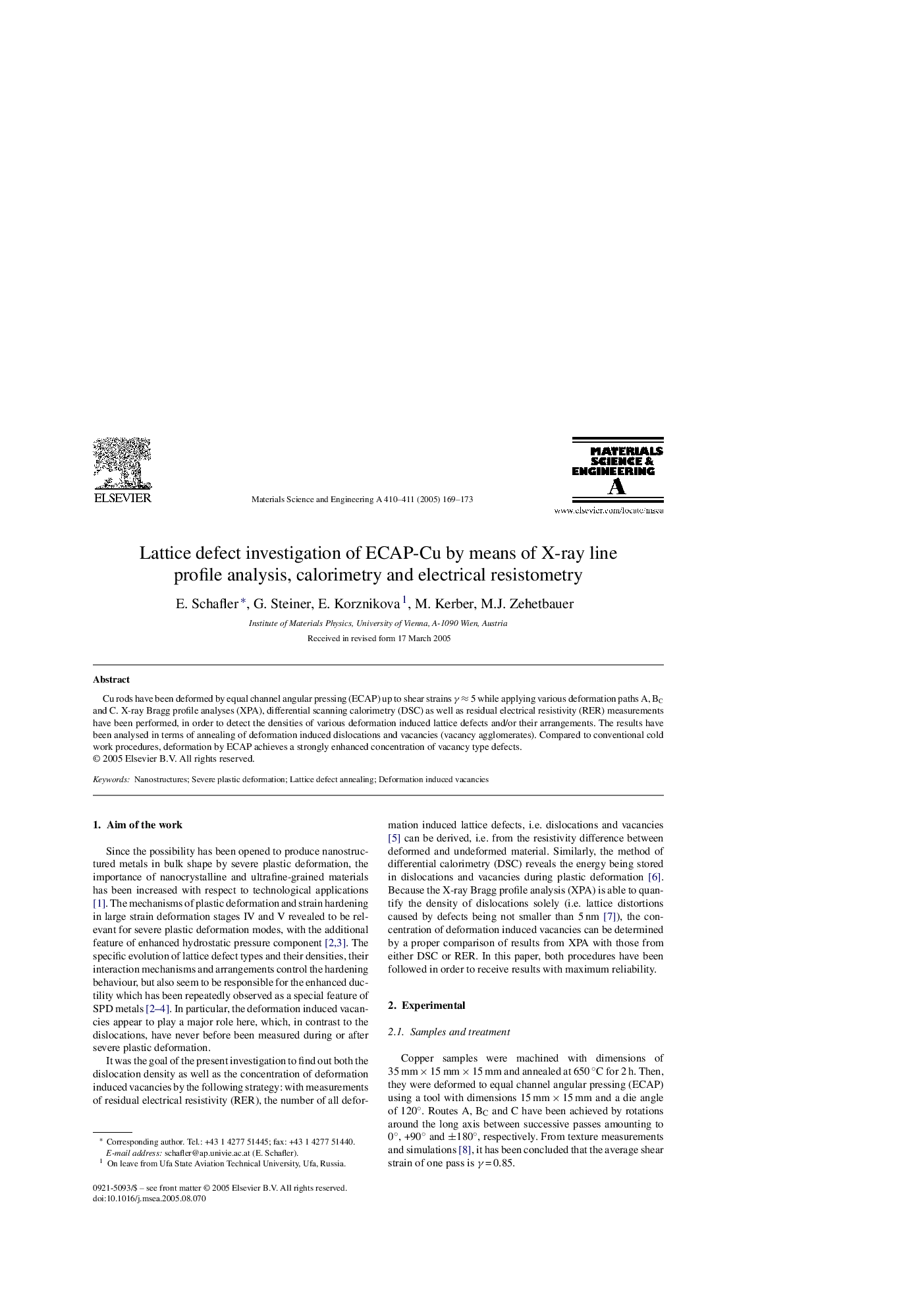| Article ID | Journal | Published Year | Pages | File Type |
|---|---|---|---|---|
| 9795631 | Materials Science and Engineering: A | 2005 | 5 Pages |
Abstract
Cu rods have been deformed by equal channel angular pressing (ECAP) up to shear strains γ â 5 while applying various deformation paths A, BC and C. X-ray Bragg profile analyses (XPA), differential scanning calorimetry (DSC) as well as residual electrical resistivity (RER) measurements have been performed, in order to detect the densities of various deformation induced lattice defects and/or their arrangements. The results have been analysed in terms of annealing of deformation induced dislocations and vacancies (vacancy agglomerates). Compared to conventional cold work procedures, deformation by ECAP achieves a strongly enhanced concentration of vacancy type defects.
Related Topics
Physical Sciences and Engineering
Materials Science
Materials Science (General)
Authors
E. Schafler, G. Steiner, E. Korznikova, M. Kerber, M.J. Zehetbauer,
